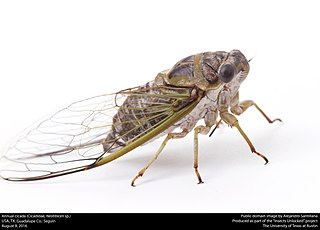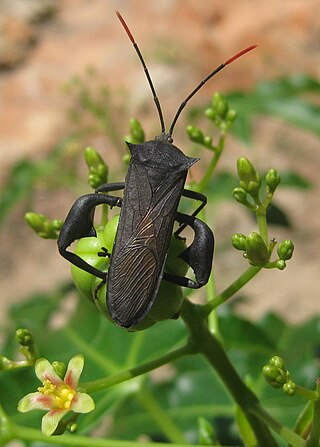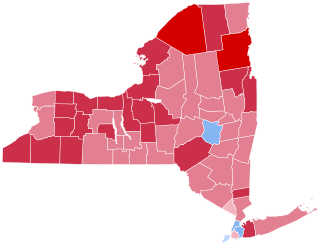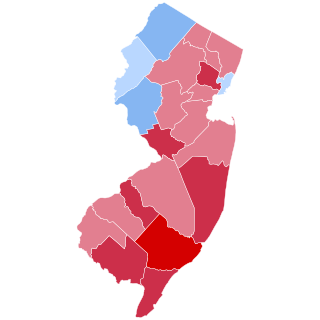
Cicadidae, the true cicadas, is one of two families of cicadas, containing almost all living cicada species with more than 3,200 species worldwide.

Coreidae is a large family of predominantly sap-sucking insects in the Hemipteran suborder Heteroptera. The name "Coreidae" derives from the genus Coreus, which derives from the Ancient Greek κόρις (kóris) meaning bedbug.

The Tata family is an Indian business family, based in Mumbai, India. The parent company is Tata Sons, which is the main holding company of the Tata Group. About 65% of the stock in these companies is owned by various Tata family charitable trusts, mainly the Ratan Tata Trust and the Dorab Tata Trust. Approximately 18% of the shares are held by the Pallonji Mistry family, and the rest by various Tata sons.

Pentatominae is a subfamily of Pentatomidae, a family of shield bugs. This subfamily is the largest one within the Pentatomidae, having 4937 species classified in 938 genera. Species in this subfamily are phytophages and several of them are considered agricultural pests. Some invasive pentatomines such as Halyomorpha halys and Bagrada hilaris have been considered household pests. Higher systematics of the group have been revised by Rider et al.

Delphacidae is a family of planthoppers containing about 2000 species, distributed worldwide. Delphacids are separated from other "hoppers" by the prominent spur on the tibia of the hindleg.

The Cicadinae are a subfamily of cicadas, containing the translucent cicadas. They are robust cicadas and many have gaudy colors, but they generally lack the butterfly-like opaque wing markings found in many species of the related Tibiceninae.

Cryptotympanini is a tribe of cicadas in the family Cicadidae. They are found in the Nearctic, Palearctic, Indomalaya, Oceania, and Afrotropics.

Heterogastridae is a family of lygaeoid bugs consisting of about 20 genera and more than 100 species.

The 1904 United States presidential election in New York took place on November 8, 1904. All contemporary 45 states were part of the 1904 United States presidential election. Voters chose 39 electors to the Electoral College, who selected the president and vice president.

Phiala is a genus of moths in the family Eupterotidae.

The Platypleurini are a tribe of cicadas from the Afrotropical and Oriental regions There are at least 30 genera and 240 described species in Platypleurini.

The 1904 United States presidential election in New Jersey took place on November 8, 1904. All contemporary 45 states were part of the 1904 United States presidential election. State voters chose 12 electors to the Electoral College, which selected the president and vice president.

Bryocorinae is a subfamily of bugs in the family Miridae.

The Blissidae are a family in the Hemiptera, comprising nearly 50 genera and 400 species. The group has often been treated as a subfamily of the Lygaeidae but was resurrected as a full family by Thomas Henry (1997).

Kinnaridae is a family of fulgoroid planthoppers. This is a small family with a little more than 20 genera and about a 100 species. The family was erected by Muir in 1925 and most members are found in the Oriental and Neotropical regions and only a few in the Nearctic and Palaearctic regions.

Drymini is a tribe of dirt-colored seed bugs in the family Rhyparochromidae. There are more than 300 described species in Drymini.

Leptopodidae is a family of spiny-legged bugs in the order Hemiptera. There are about 15 genera and more than 40 described species in Leptopodidae.
Colobathristidae is a family of true bugs in the order Hemiptera. There are more than 20 genera and 90 described species in Colobathristidae.
















